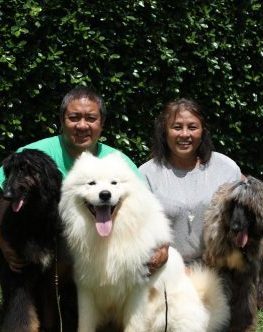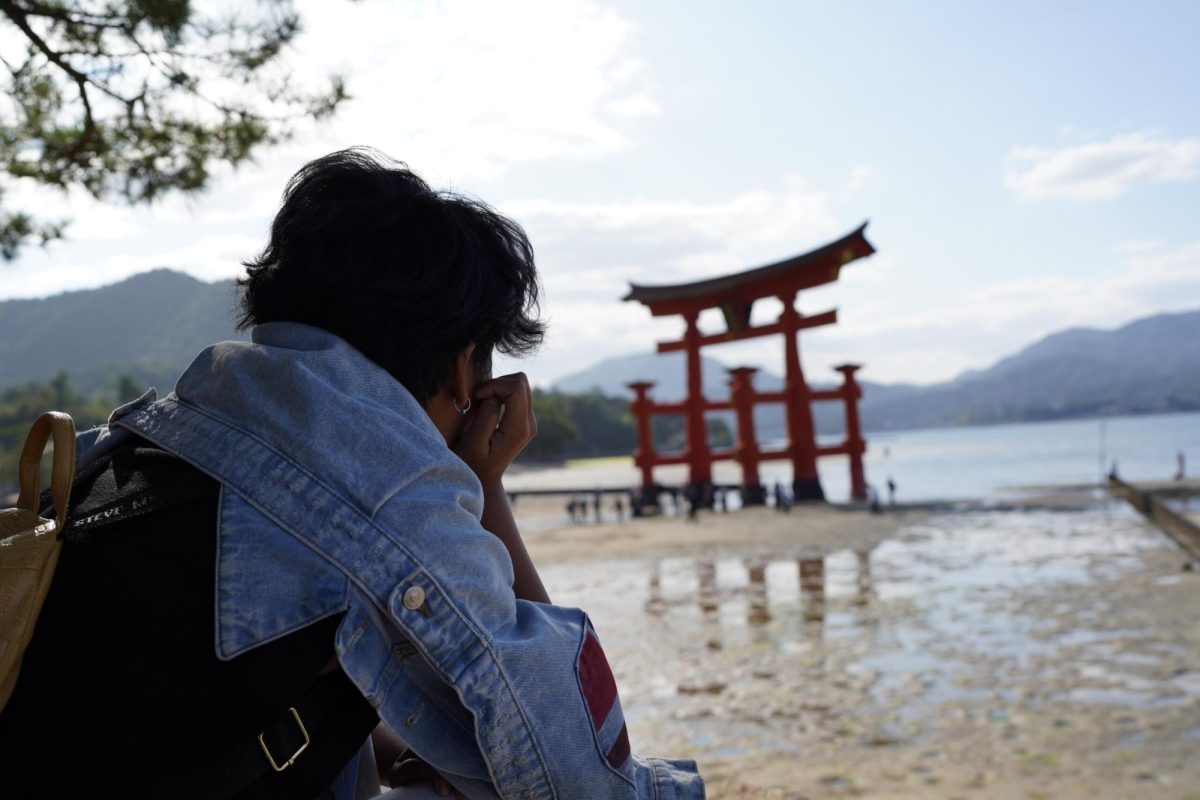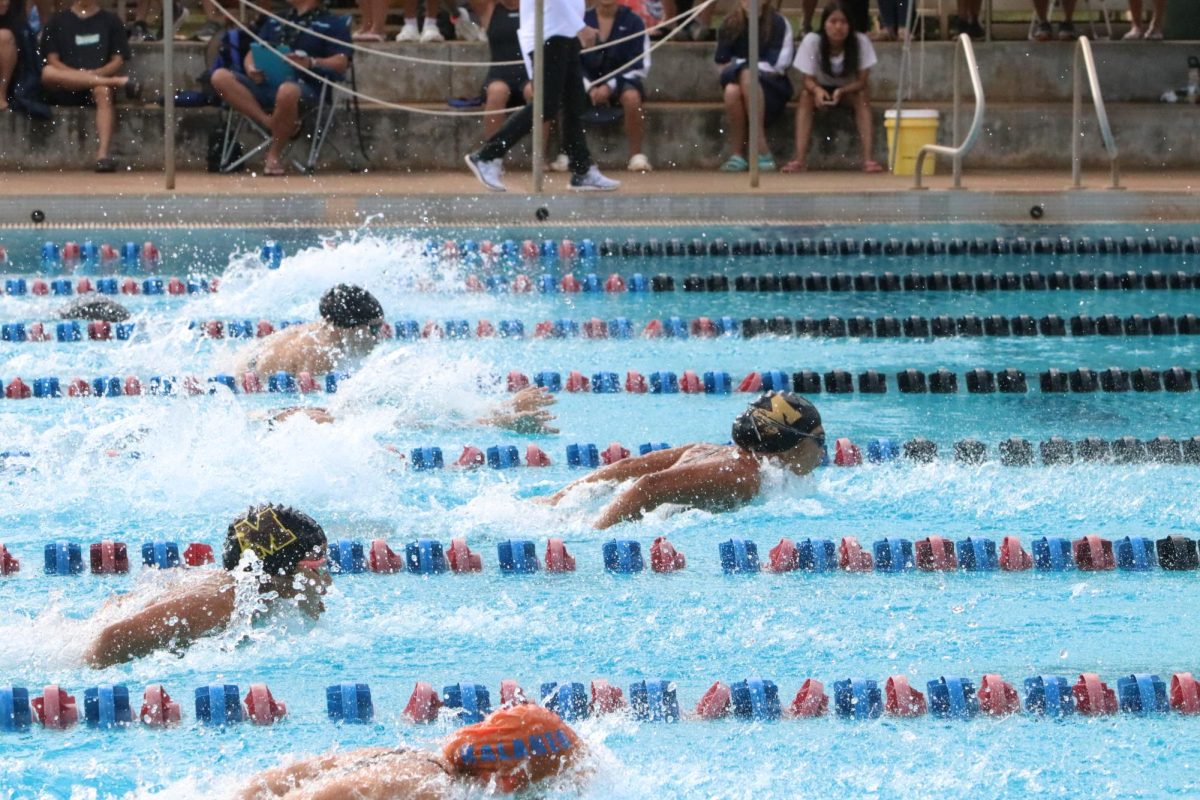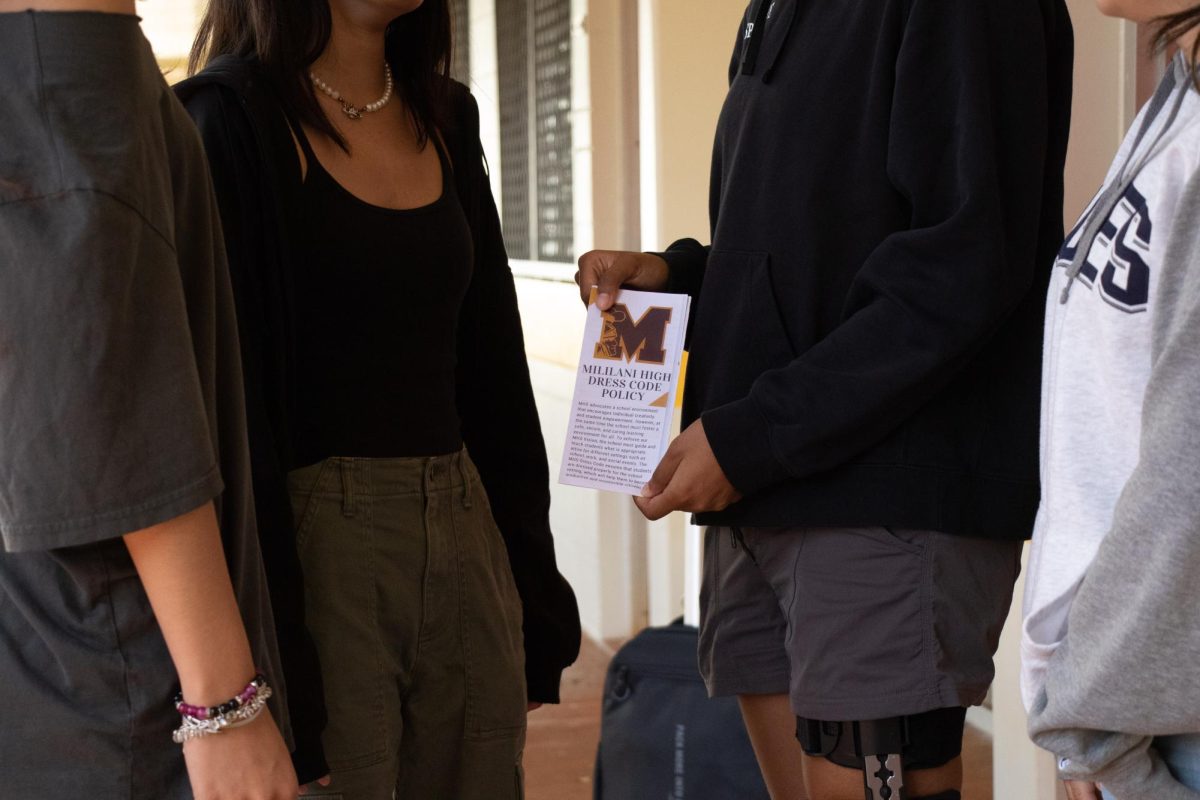Looking Quite Fetching: Office Assistant Gano Returns to Dog Shows

Handlers can only show one dog at a time so, until they can find another handler, Royd Gano will be showing Macca and Irene Gano will alternate showing Dany and Troy.
October 4, 2018
Inspired by a love of dogs, MHS office assistant Irene Gano and her husband Royd Gano began entering their dogs into dog shows in the 1990s. Now, after three kids and a decade-long break, Irene and Royd Gano have once again taken up dog handling.
“When my kids were born we kind of stopped, but along the way we kept our Samy (Samoyed) and then we got interested in Afghans (Afghan hounds) now — that’s our new thing. We’re back into it because our kids have gotten older — two of them are away — so we’re getting back into the dog show world,” said Gano.
The Ganos began participating in dog shows after buying a female Samy — a large dog breed with a white, double-layered coat. They initially bought her as a pet back in the ‘90s and, after being contacted by the breeder, decided to show her. “We got our Samy from Australia and then we just kind of went around (looking into breeders and dog shows). We got introduced to the breeders here in Hawai’i and we thought it was something interesting so that’s how we got in way back when,” said Irene Gano. “We started watching the Westminster show and actually we saw an Afghan that we loved and I said ‘wow,’ we never knew how to get one and we saw a Samy and got that. She (Irene) started going to shows and hooked up with the Samy handlers or exhibitioners and they said, ‘Hey, just bring your dog and try it out,’ and we liked it and got hooked for a while,” said Royd Gano. “Our first dog — all our dogs actually — was from Australia. She’s too small for the U.S. standard so, luckily, her breeder ended up hooking us up with other people. We got a dog, showed it, got it titled and got hooked.”
Earlier this year, Irene Gano and Royd Gano decided to try and find an Afghan — the dog that had inspired them and led them to getting their first Samoyed. They now have a three year old Samoyed named Troy, as well as male and female Afghan puppies named Macchiato and Daenerys, or Macca and Dany for short. “We’re just getting back into it and we’re learning and with a new breed, it’s a totally new deal,” said Royd Gano. Irene Gano added, “They’re a little bit different from what we’re used to — the other one is so obedient and this one, the Afghan, is stubborn.”
Having had their second Samoyed become a champion back in ‘95, the Ganos are still determined as ever to meet and surpass the success of their past dogs now that they have returned to the dog show world. The Ganos enjoy the competition of the dog shows, as well as the chance to show off their dogs. “Best is, just do what you can and leave it up to the powers that be I guess. You like everyone looking at you, I guess, and that’s another scary thing — everyone’s looking at you and, if you can’t handle your dog, everyone’s going to be looking at you and going, ‘Wow, he can’t handle his dogs,’” said Royd Gano.
To avoid the prejudices of judges from interfering with the scoring of the competition, judging for the competition is not based off of what each judge personally likes and is rather determined by the standards of organizations such as the American Kennel Club (AKC). The judging criteria varies by country as each has their own set of ideals for every dog breed, which is why the first Samoyed that the Ganos had purchased from Australia had a hard time winning in the U.S. “They don’t judge dog against dog, it’s your dog and how it matches up against breed standard and same with the other dogs. I guess they have a point system. What you basically do is run around the ring so that the judges can see the gait — see how the dog’s movement going away, coming towards, going around the ring looks (and) just standing, teeth — they’ll have you show their bite so they can see how the teeth are,” said Royd Gano.
In order to compete for the top award, the dog has to win the first two rounds of the competition. If your dog wins first in their breed and then in their group, they’ll move on to compete against six other dogs for the top award, Best in Show. “There’s seven groups in the AKC world, in American Kennel, so we’re in the hound group. You have to compete with all the different hounds — your breed first and then your group and then you get into the big show,” said Irene Gano.
AKC hosts a variety of matches, which are more for fun, and shows, which are a more serious venue throughout the year. The main reason that most dogs are entered into AKC sanctioned shows is to be able to get enough points for the dog to earn their championship. “The championship is just a title. Say like our boy, Tachira Macchiato, so if you get championship you get the title ‘CH’ in front of your dog’s name and you get a certificate saying your dog’s got his championship points and now he can be called Champion Tachira Macchiato. It’s just bragging points,” said Royd Gano. “As far as points go towards your championship, each breed is different in that it all depends on how many dogs are entered in that competition. Unfortunately for us, for the Afghan and the Samys, there’s not enough dogs to get what they call a Major — a three point Major — where you would need four dogs to get at least three points. It’s 15 points to get your championship, but of those 15 points, you need two majors. So, for us, where we don’t have enough dogs in the breed, we would need to place first in the group.”
The Ganos plan to breed their dogs and sell the puppies, building a bloodline representation. The kennel name is essentially the name that a breeder attaches to their dogs’ bloodlines in order to mark the puppies that they sell as a descendant of their dogs. “The plan is to eventually get our own kennel going and, to get your name out there, you need to show your dogs and get them titles and hopefully that brings the money in — also the prestige. Just like horses, you want your horses to win so that when you stud them out you can get your money back at least. That’s the goal is to try and get your money out,” said Royd Gano. Irene Gano added, “So my kennel name is Motley — we started that name back in the ‘90s so hopefully we can revive that. You have to show your dogs; you have to get your championships in order to build up your kennel name and that’s what our goal is — to build up our kennel.”
On Sept. 2, the Gano’s youngest Afghan, Macca, competed and placed fourth in his breed and won Best Match. Both Macca and Dany will be competing in the Windward Hawaiian Dog Fanciers Association show on Sept. 30 and Macca, accompanied by Royd Gano, will be competing at the Orchid Island Dog Fancier Club, Inc. show in Hilo on Oct. 6. Ultimately, Irene and Royd Gano hope that continuing to show their dogs and building up their kennel will help promote dog handling and a raise in the amount of shows and dogs in Hawai’i. (Disclaimer: This story was written and printed prior to the show on Sept. 30).



